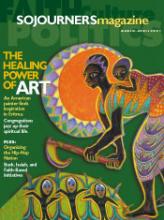The subject of science and religion is its own rapidly expanding universe, with innumerable academic conferences, centers, and books. This intellectual eruption is fueled, aver some skeptical scientists, partly by the bang of big bucks being emitted from the John Templeton Foundation in the form of awards, grants, and prizes. But the field also is spurred by the hope of reclaiming for religion the intellectual position it lost as the Scientific Revolution dispersed like clouds many religious explanations of the world and its ways.
Today, the intellectual compatibility between science and religion, not to mention the eternal question of the nature of God, is being explored so broadly-in cosmology, genetics, and the nature of atomic forces, to name a few areas-that an annotated roster is essential. Ian G. Barbour, professor emeritus of physics and religion at Carleton College, provides just that in When Science Meets Religion: Enemies, Strangers, or Partners? (In 1999, Barbour himself won $1.24 million when he was granted the Templeton Prize for Progress in Religion.)
Barbour's typology is not the first, but its brevity and thoroughness should be commended. Barbour reviews just about all the players, both religious and not, and he positions them in a framework that delineates four primary streams of thought. First, conflict: Science and religion inevitably conflict. This stream encompasses both creationists and atheistic scientists ("true believers" of either stripe, in the view of Chet Raymo, author of Skeptics and True Believers). Second, independence: Science and religion offer answers to different, non-overlapping questions, provided they remain in their areas of expertise (paleontologist Stephen Jay Gould, author of Rocks of Ages, holds this view).
Read the Full Article
